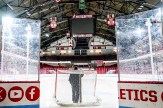I was tested for COVID-19 on campus. Here’s how it went.
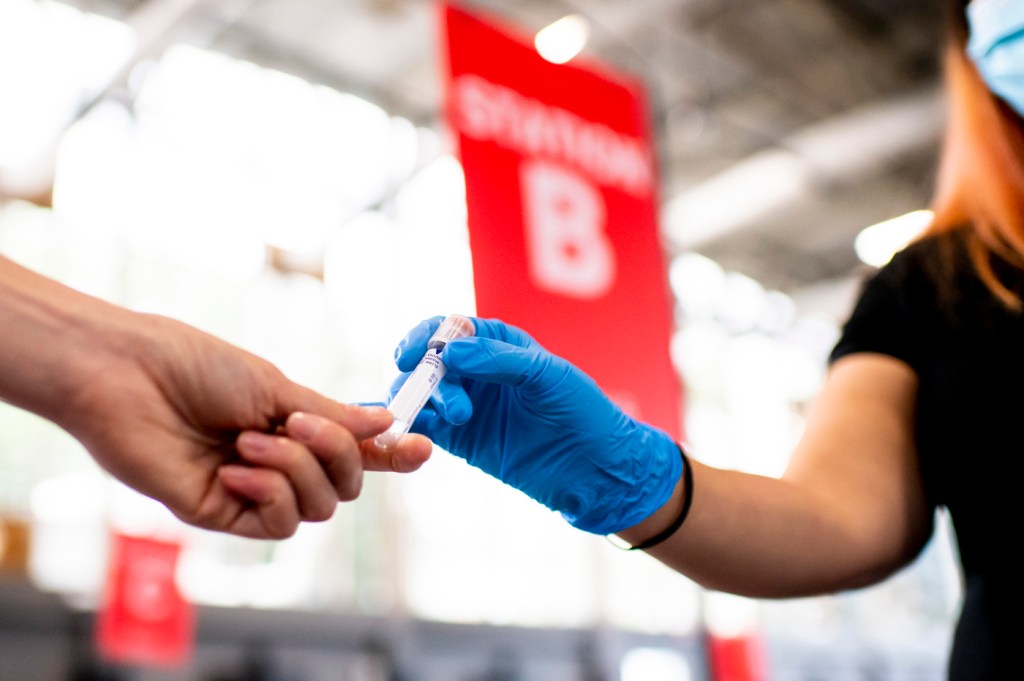
I reached for my sterilized Q-tip casually, like an actor accepting a cigarette in an old black-and-white movie.
I had been a little uptight about the procedure, admittedly. Haven’t we all heard stories about the discomfort (if not the pain) of the original COVID-19 tests? But this newer, gentler procedure to which I am submitting, in a repurposed indoor baseball facility on Northeastern’s Boston campus, is self-administered, pain-free, and quick. By the time I’ve counted to 10—twice—I’m all done.
Testing for the coronavirus begins Monday at the Cabot Physical Education Center, which is available for anyone from the Northeastern community on the Boston campus who does not show COVID-19 symptoms. (People with symptoms of illness will be tested elsewhere on campus.)
The testing regimen at Cabot is crucial to the reopening of campus this month. Over the next two weeks, all members of the Northeastern community who are currently working or studying on campus will be asked to take COVID-19 tests to ensure they are healthy.
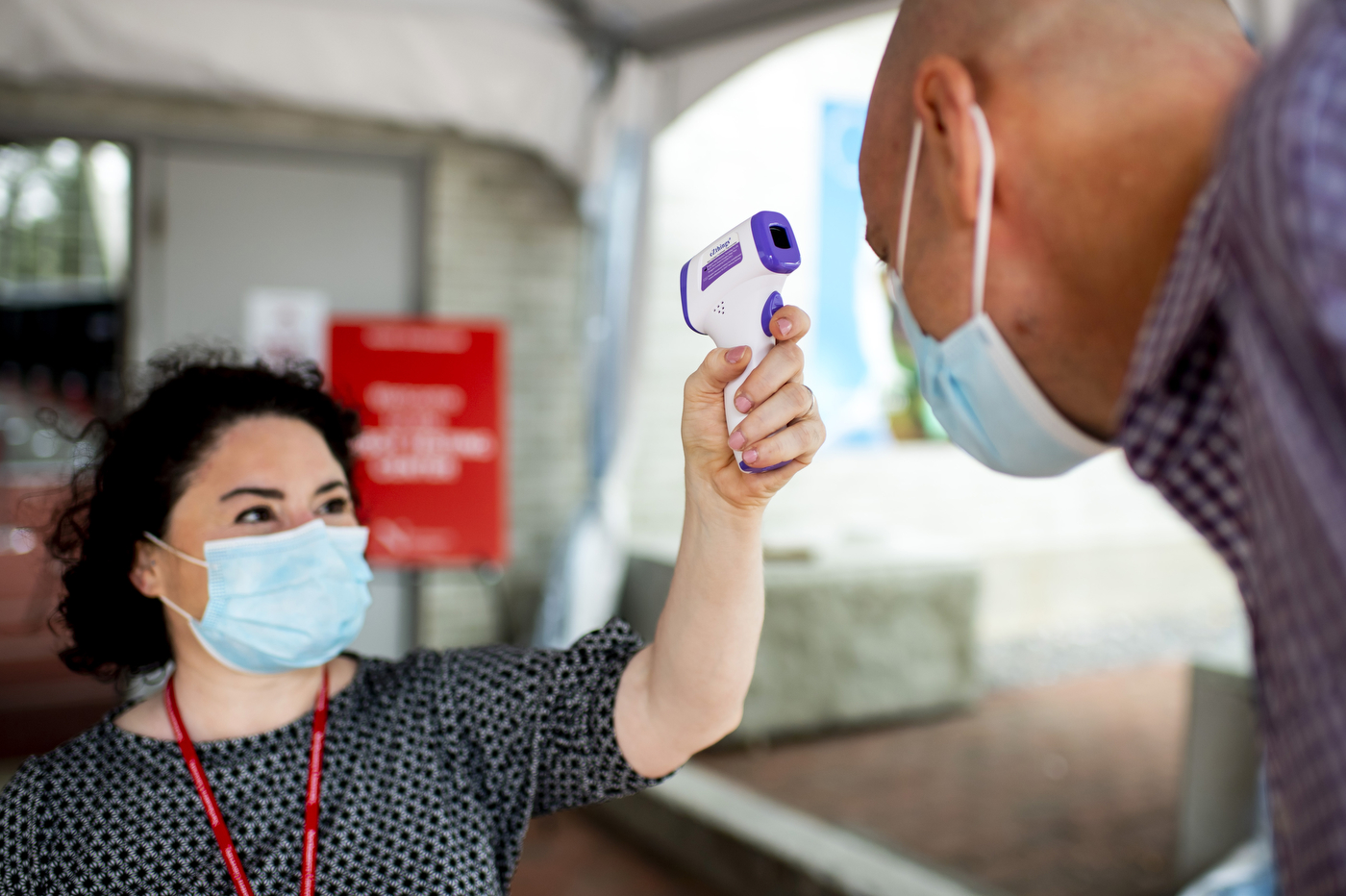
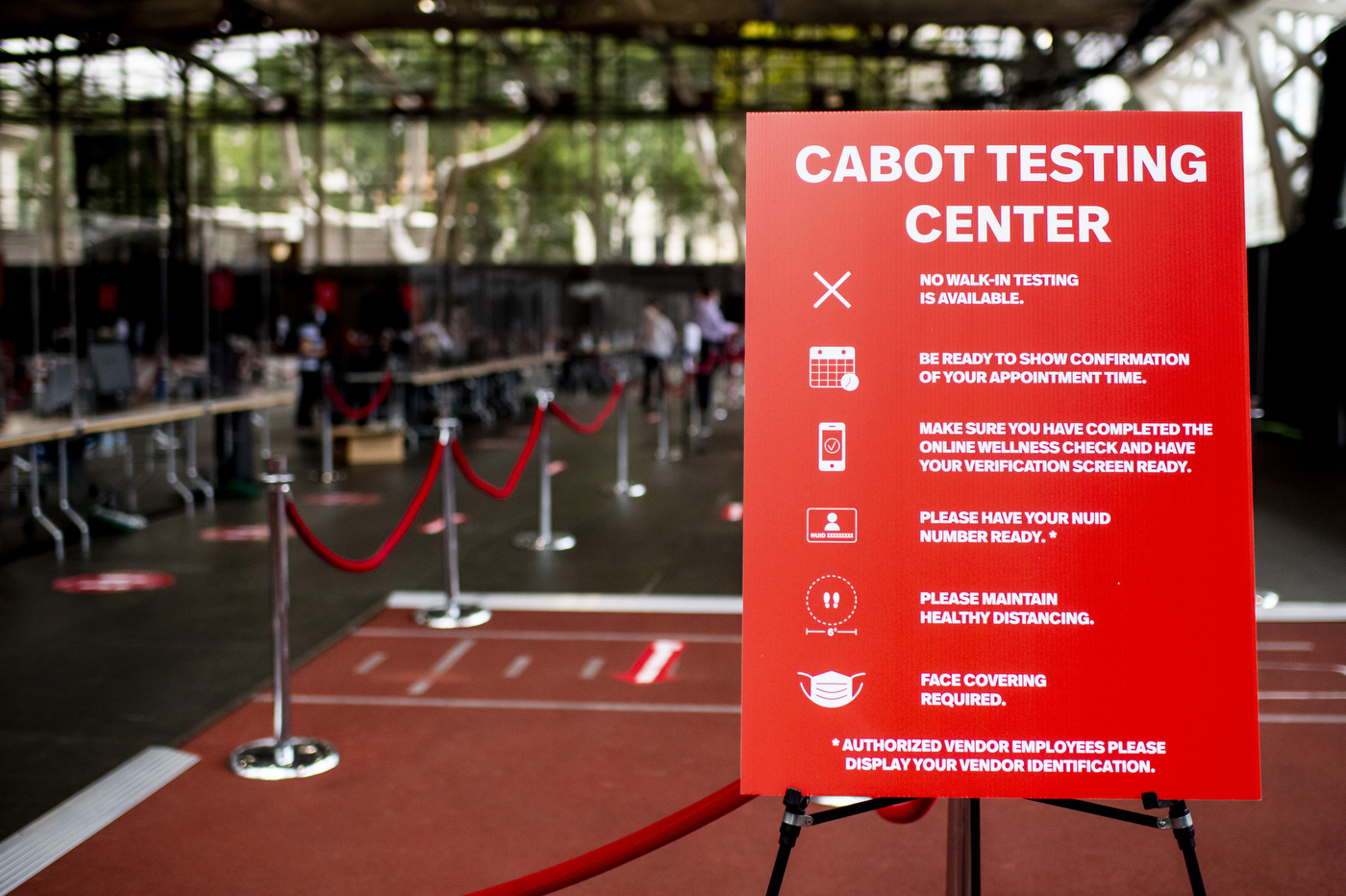

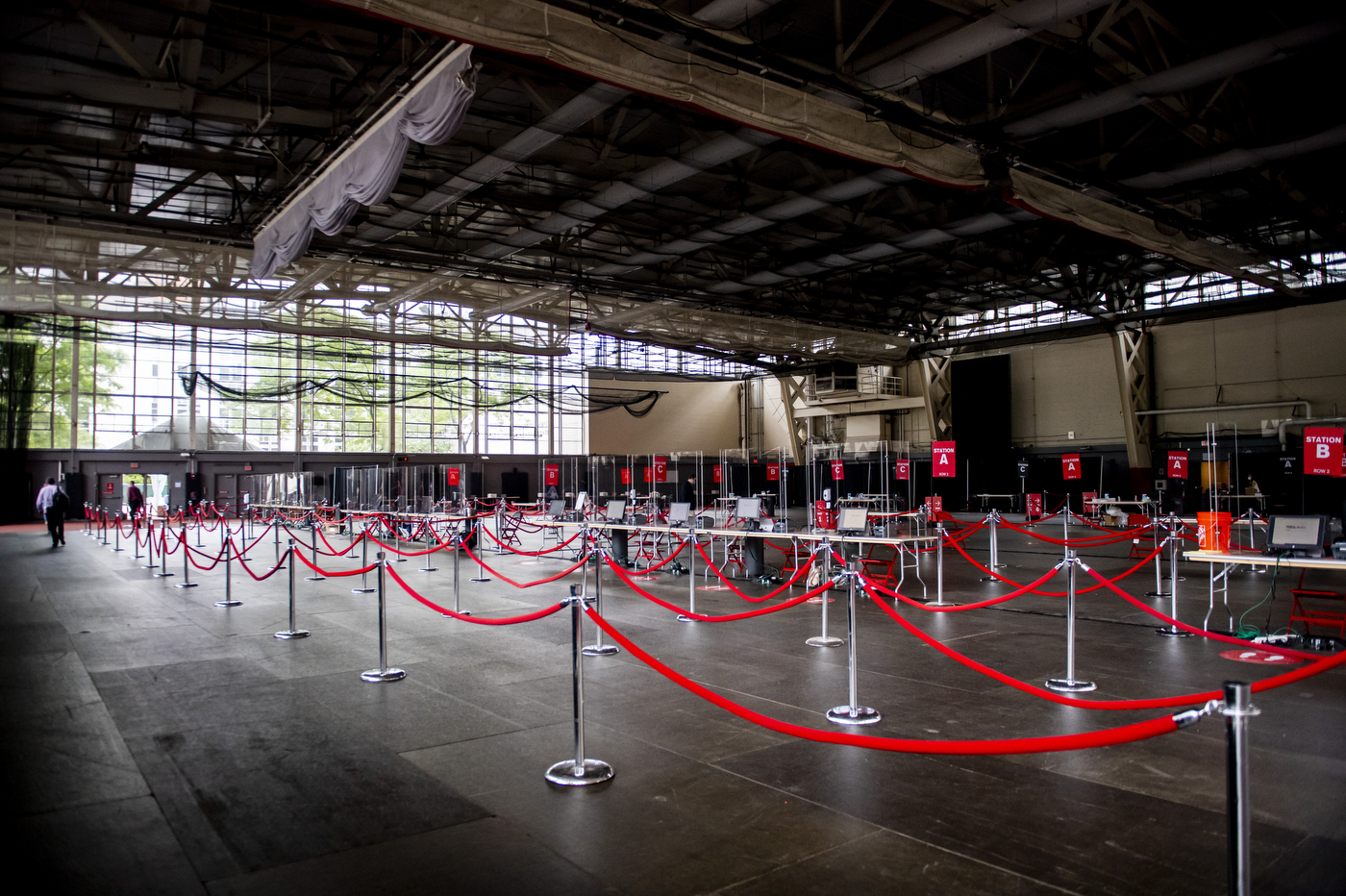
“We want to get everybody on campus tested right now, including all of the graduate students that are in the labs,” says David Luzzi, senior vice provost for research and vice president of Northeastern’s Innovation Campus. “But we also want people to understand that this is our spin-up period—our learning period. We want to use this period to optimize the center, so that when the undergraduate students arrive, starting August 29, the testing center is ready.”
When the campus is fully occupied for fall semester, says Luzzi, the goal will be for everyone to go through the testing at Cabot painlessly in 10 minutes, from start to finish.
Faculty and staff will be tested every seven days, or whenever they are on campus if their visits are less frequent than one day a week.
Students will be tested the day they arrive, then on day three, followed by day five—and will be able to attend classes in person after receiving negative results on all three tests.
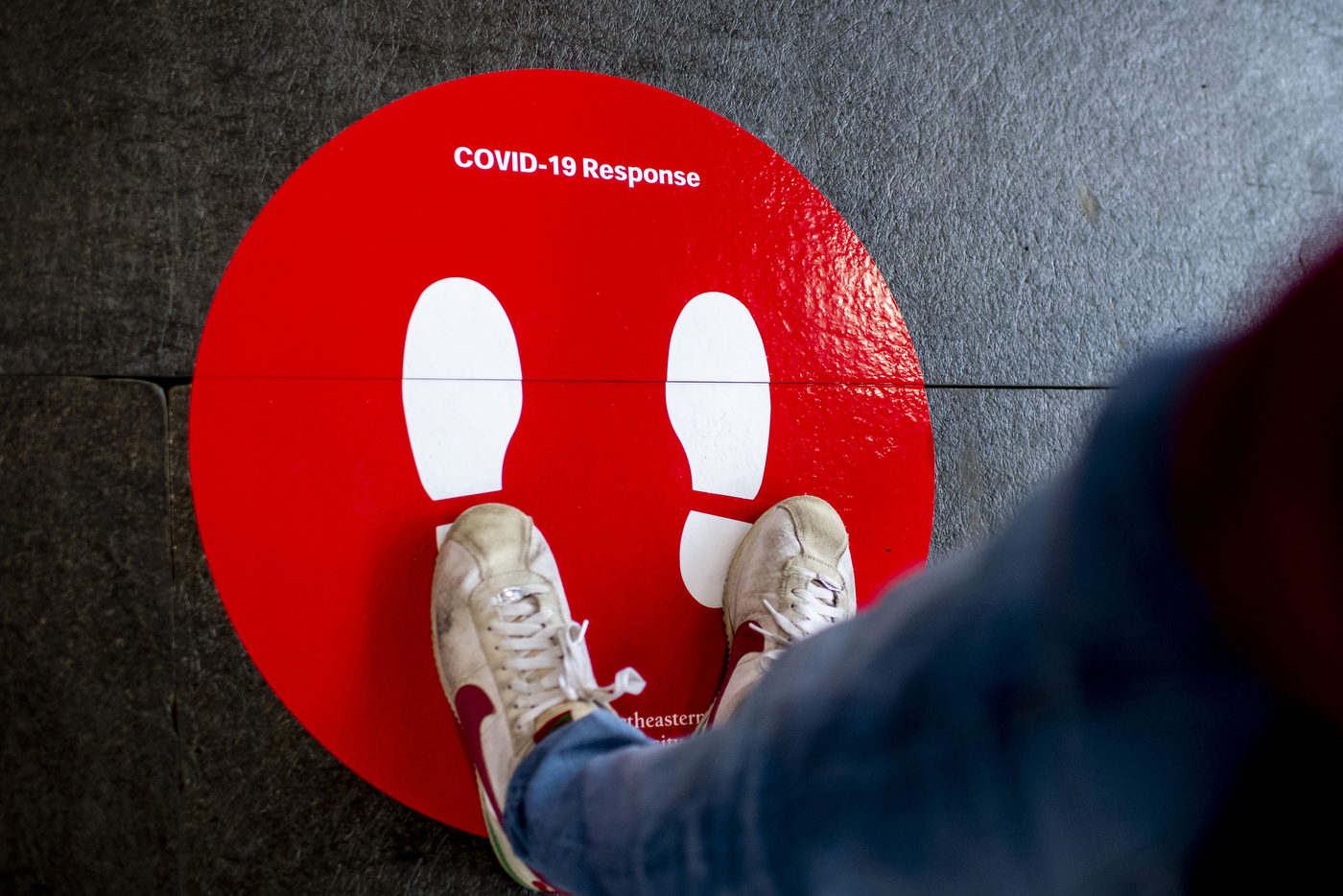

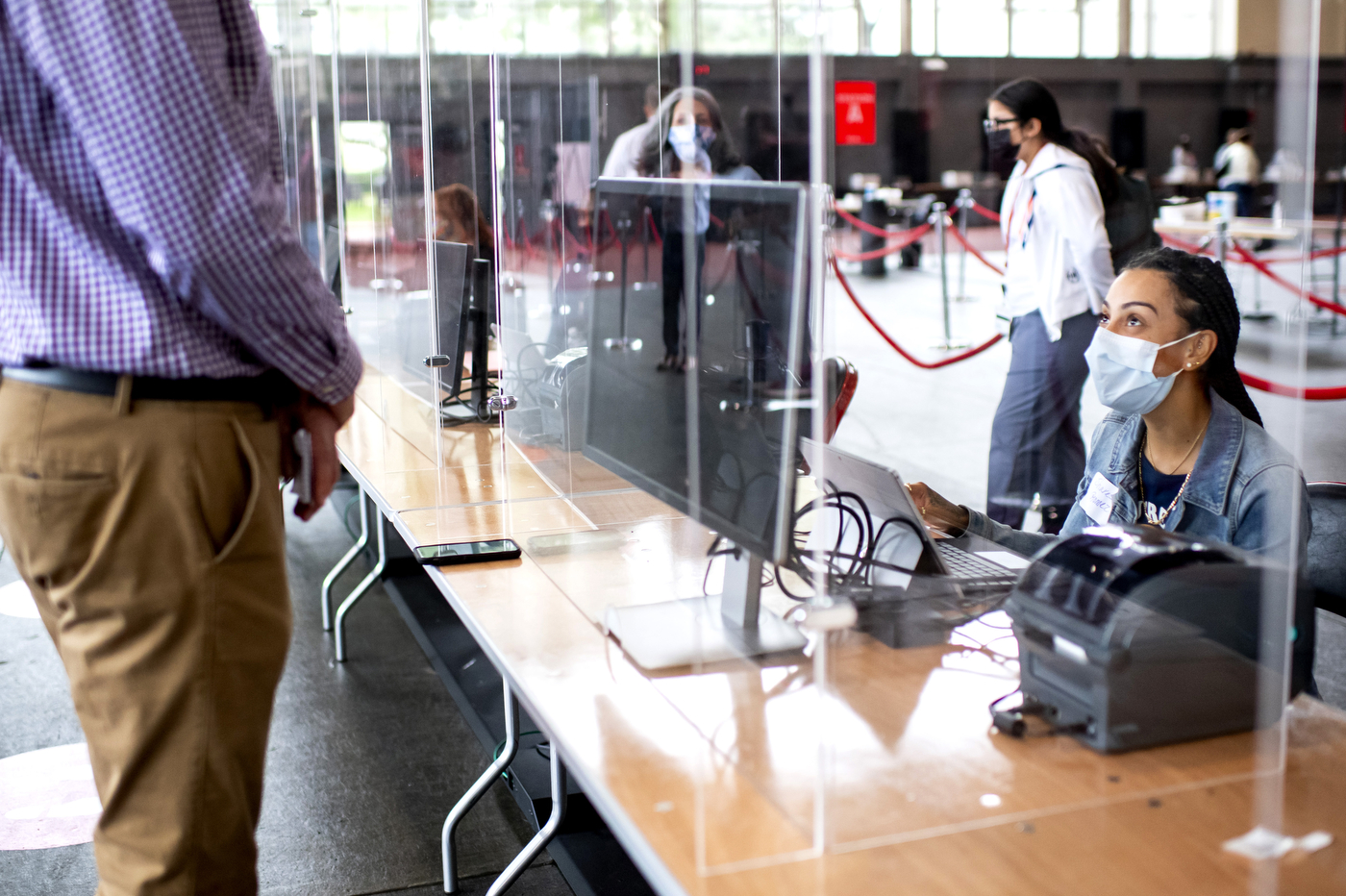
The Cabot Center is still fitted with familiar signs of its original purpose. The black netting that protected the facility during batting practice remains gathered in the corners of the lofted ceiling like a quaint pre-COVID decoration. Its folds have been enframed by a half-dozen long, thick ventilation tubes that spasm endlessly while discharging air from the room.
“On Wednesday this was an empty space with nothing in it,” says Ken Henderson, chancellor and senior vice president for learning. “We’ve arranged it to get as many as 500 people per hour through the facility.”
All appointments must be arranged via the COVID-19 Test Scheduler (no walk-ups are allowed). Tests are available on weekdays between 7 a.m. and 7 p.m., with abbreviated hours on weekends.
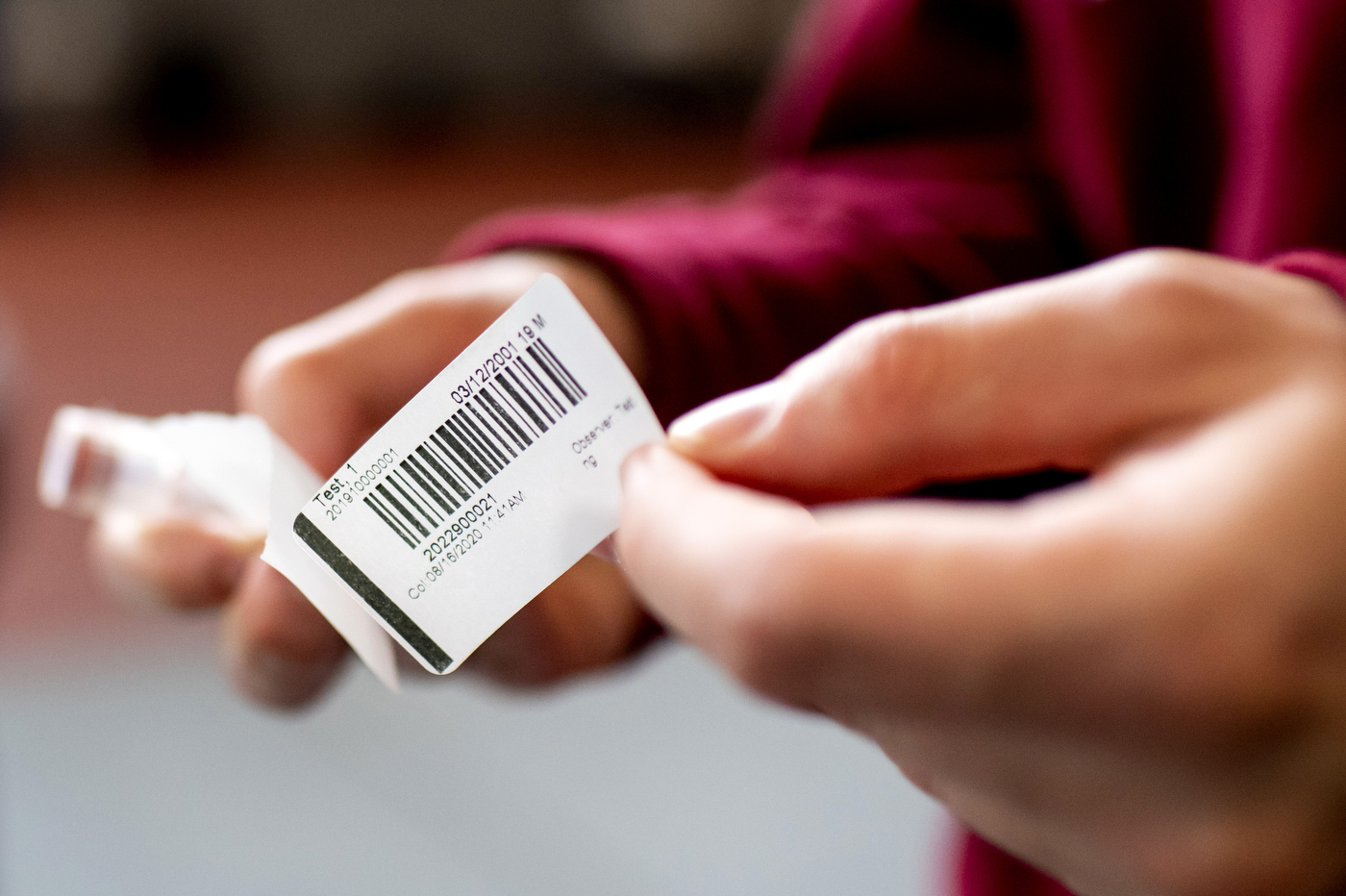
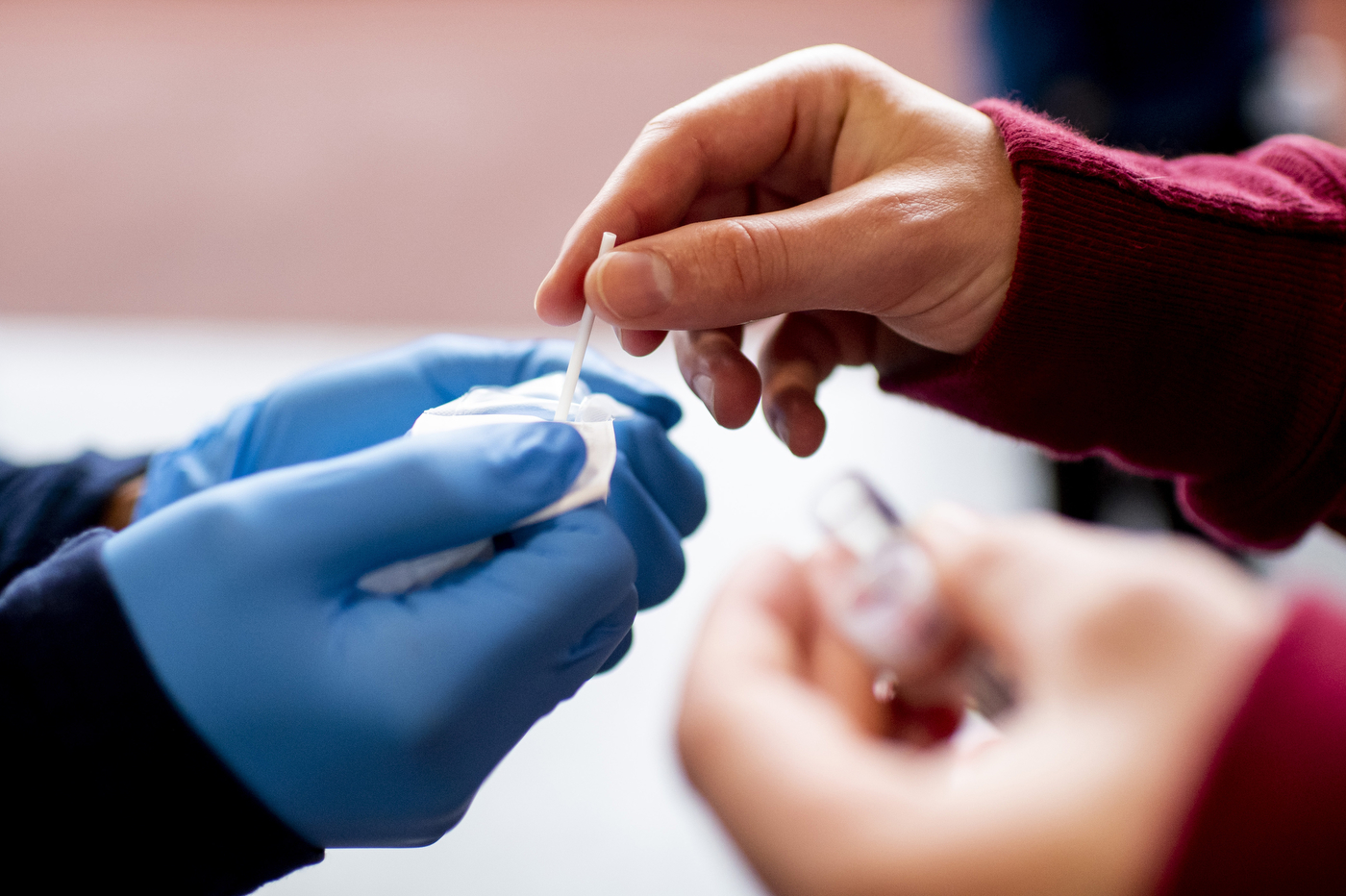
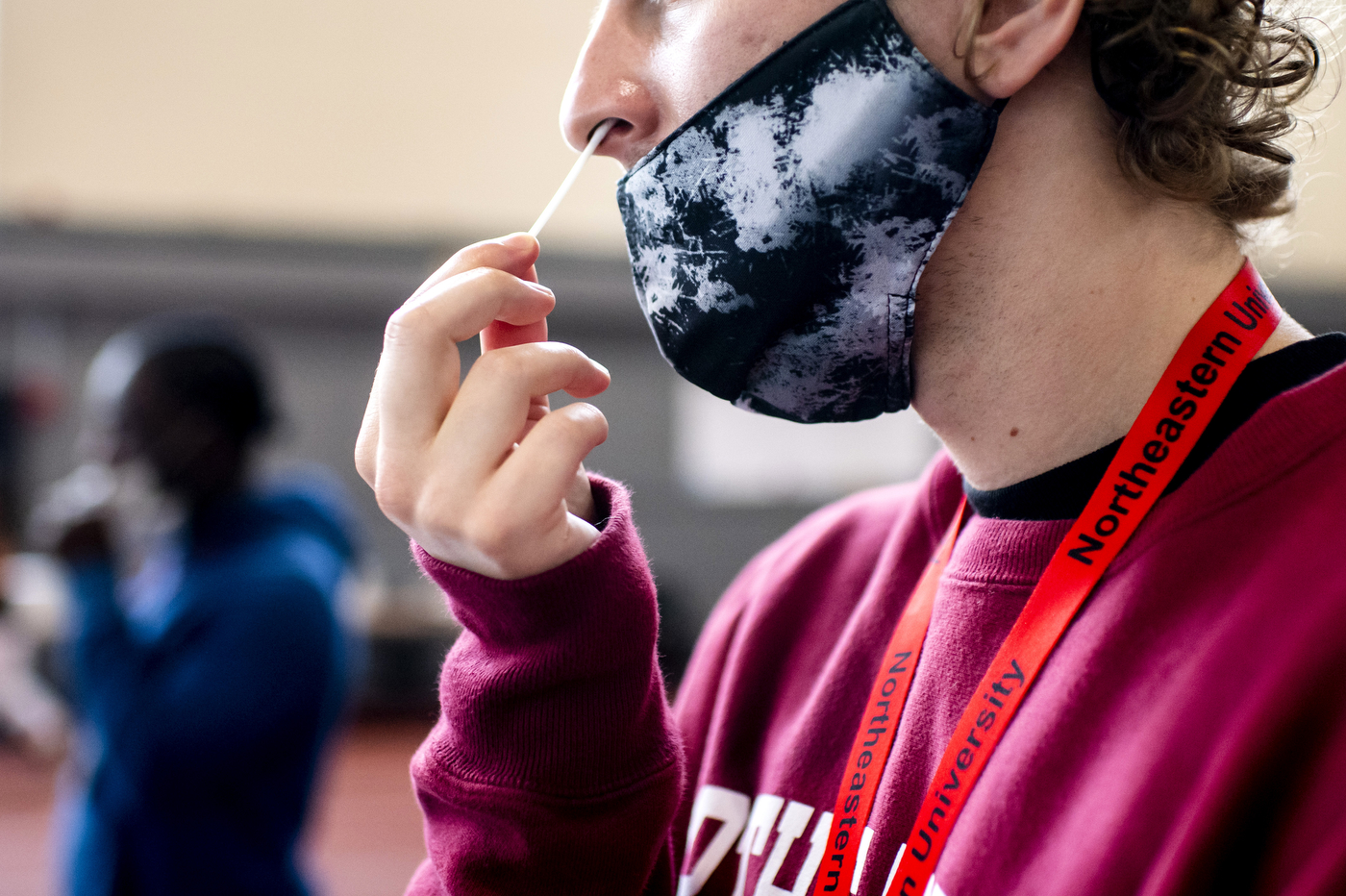

The entrance to the testing facility has been outfitted with a large white welcoming tent. It is here that the three-step process begins.
Step One: A greeter in the tent asks if you have made an appointment online (which includes a symptoms checklist that you must complete on the same day as your COVID-19 test). You show your Northeastern ID, and your temperature is taken instantly with an infrared thermometer.
You are invited to enter the Cabot facility, where an usher asks you to follow a path laid out by red ropes. It’s a little bit like queuing up for a ride at DisneyWorld (though these lines promise to move much more quickly).
Step Two: You are greeted by a receptionist seated at a computer behind a plexiglass shield. You are asked for your Northeastern ID number and your date of birth. If there are any clerical issues with your appointment, they will be addressed here; otherwise, you are handed a small barcoded sticker and sent onto the final phase of the operation.
At every station throughout the three-step process, you will find an ultraviolet germicidal irradiation lighting (UVGI) with high-efficiency particulate air (HEPA) filtration system. These units, which resemble portable dehumidifiers, have been shown to reduce particulate count, including those potentially containing viruses.
Step Three: You are directed to the first available testing station. There are 16 of them, and each station can accommodate up to three appropriately distanced test-takers.
A worker at your testing station guides you through the following actions:
- You are handed a small vial and asked to apply your barcoded sticker around the vial.
- You pop open the vial and accept a Q-tip swab.
- Per the instructions of the tester, you insert the swab one half-inch into one of your nostrils and slowly swirl it around the inside of the nostril for 10 seconds. You repeat the same action around the other nostril.
- Place the swab back into the vial, pop the lid back on top, and place the vial into a box (which, within two hours, will be on its way to Northeastern’s new testing facility at its nearby campus in Burlington, Massachusetts).
- Sanitize your hands and exit the facility.
That’s that. You are done.
If you test positive for COVID-19, then you will receive a phone call within 24-36 hours providing you with the result as well as information on what you’ll be doing next to keep you and your community safe.
Negative results will be shared with you via email.
Luzzi cites two priorities: Provide quick results that will help limit the transmission rate of COVID-19, and scale the tests in order to account for one-fifth of the Northeastern community every five days.
Streamlining the process is crucial to its success, Luzzi says.
“We don’t want you to lose a big chunk of your day to being tested,” Luzzi says. “We want to be executing this process at a very rapid speed, which is why we have so many stations.”
Roberto Molar Candanosa contributed to this report.
For media inquiries, please contact Jessica Hair at j.hair@northeastern.edu or 617-373-5718.

